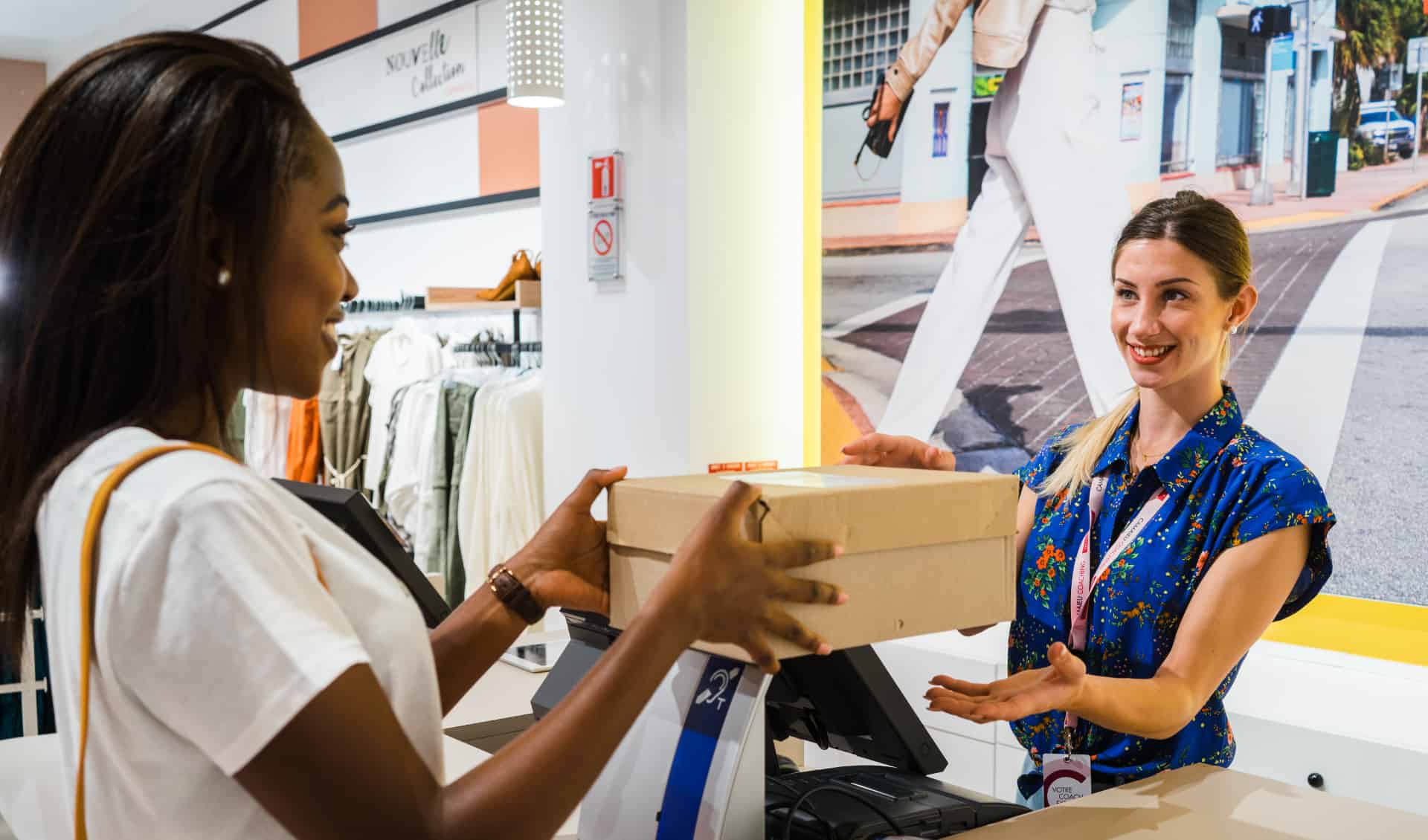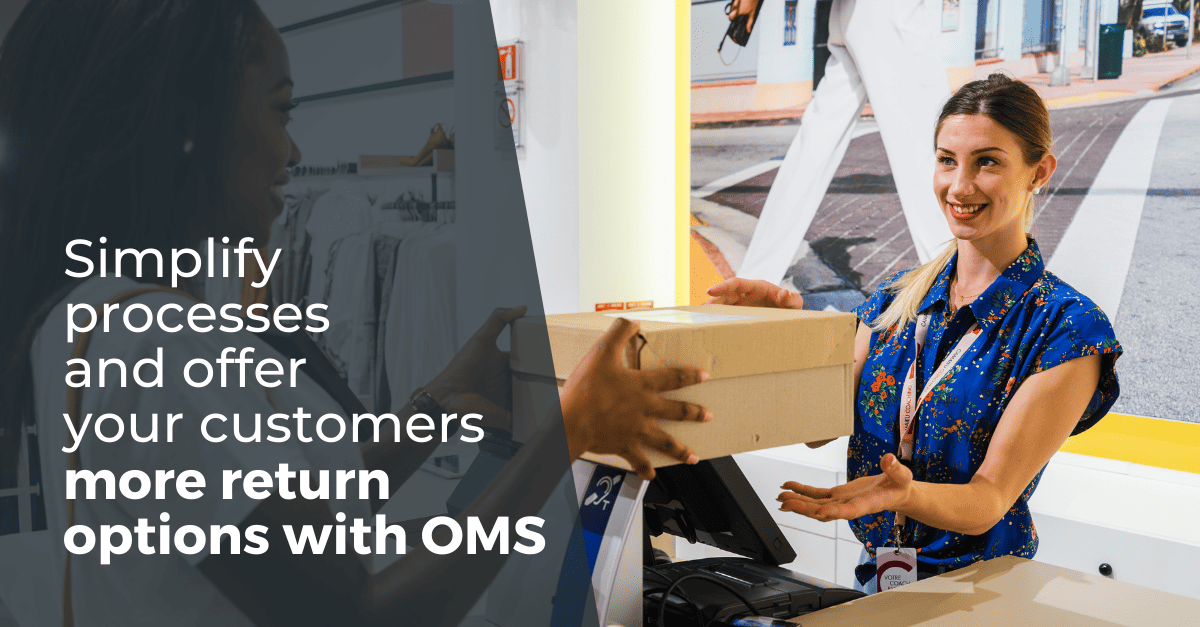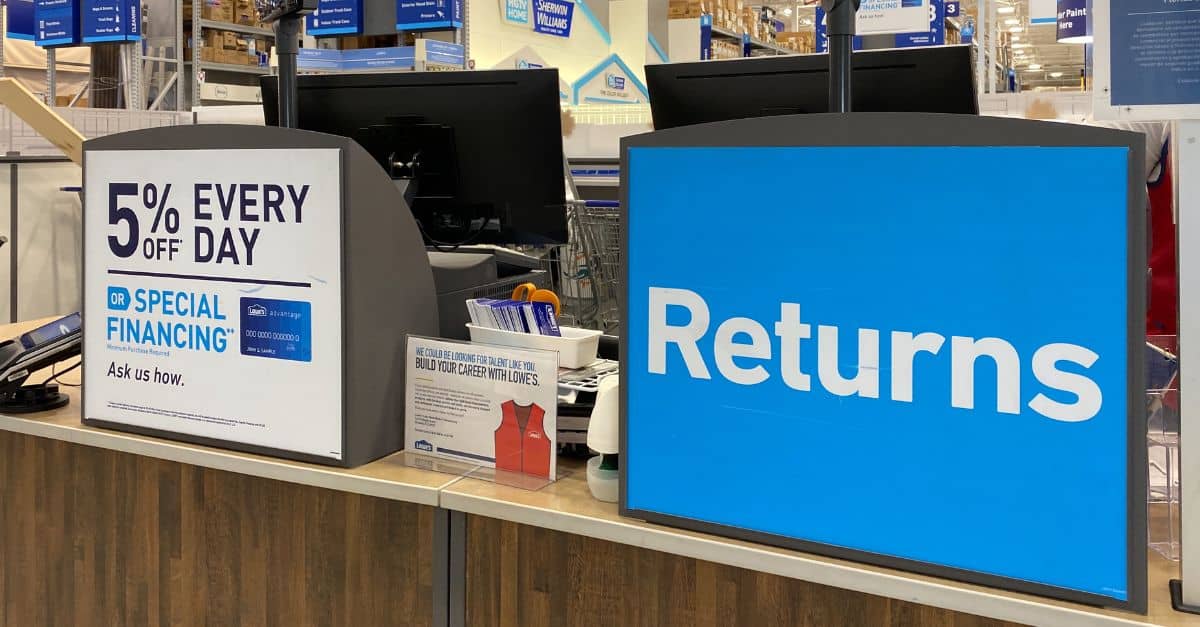Returns management
25–40%
of online items returned
68%
of shoppers check a brand’s returns policy before making a purchase
46%
of shoppers abandon a purchase due to unfavourable returns policies
95%
of customers value a smooth returns process, leading to increased loyalty
Returns management overview
Returns Management is a seamless reverse logistics solution that enables customers to easily return products through any sales channel, while ensuring cost-effective handling and tracking of returns by the retailer.
A full range of returns options to meet all customer needs
OneStock OMS facilitates all of the available options for returns, including:
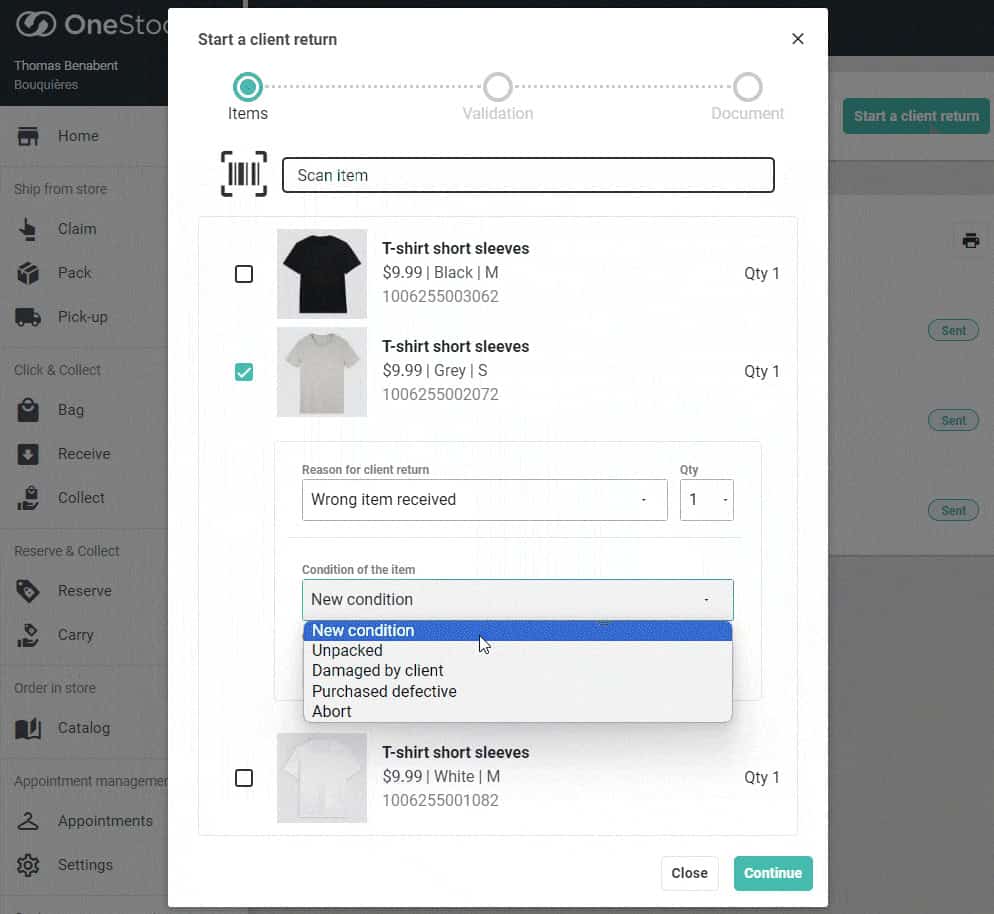
In-store returns
Our Store App allows retail staff to seamlessly manage the process, with access to order details, history and returns management, ensuring a smooth experience for customers.
Pre-printed returns
Return labels are included within the original parcel with instructions. While convenient, this method has some drawbacks, such as limited return options, limited drop-off points and lack of confirmation of item returnability.
Self-service returns
Customers manage their orders via the retailer’s portal with multiple return options. While this method offers increased convenience, customers must initiate the process themselves and a printer may be required.
Direct returns
Parcels are returned to the warehouse without prior notification. Although this process is easier for carriers and retailers, it often results in a poor customer experience due to the minimal information provided.
Call centre returns
Customers contact customer service to register returns. While customers receive immediate confirmation, human intervention is required to register the return, adding extra steps to the returns process.
Circular economy returns
OMS technology is versatile and can be used to manage returns of used goods within the circular economy.
Why is optimising returns processes a must?
Higher conversion rates
Customers feel more confident in making purchases when they know they can benefit from a convenient returns process across all channels, leading to higher conversion rates and increased sales.
Improved customer experience
When the omnichannel returns process is convenient, satisfied customers are more likely to return for future purchases, becoming valuable repeat customers.
Better channel integration
Returns management ensures that customers receive the same level of service regardless of where they made their purchase and return their items. Restocking products for resale or routing them to a more appropriate location helps optimise inventory levels, reduce stockouts and minimise the operational complexity and logistics costs associated with returns handling.
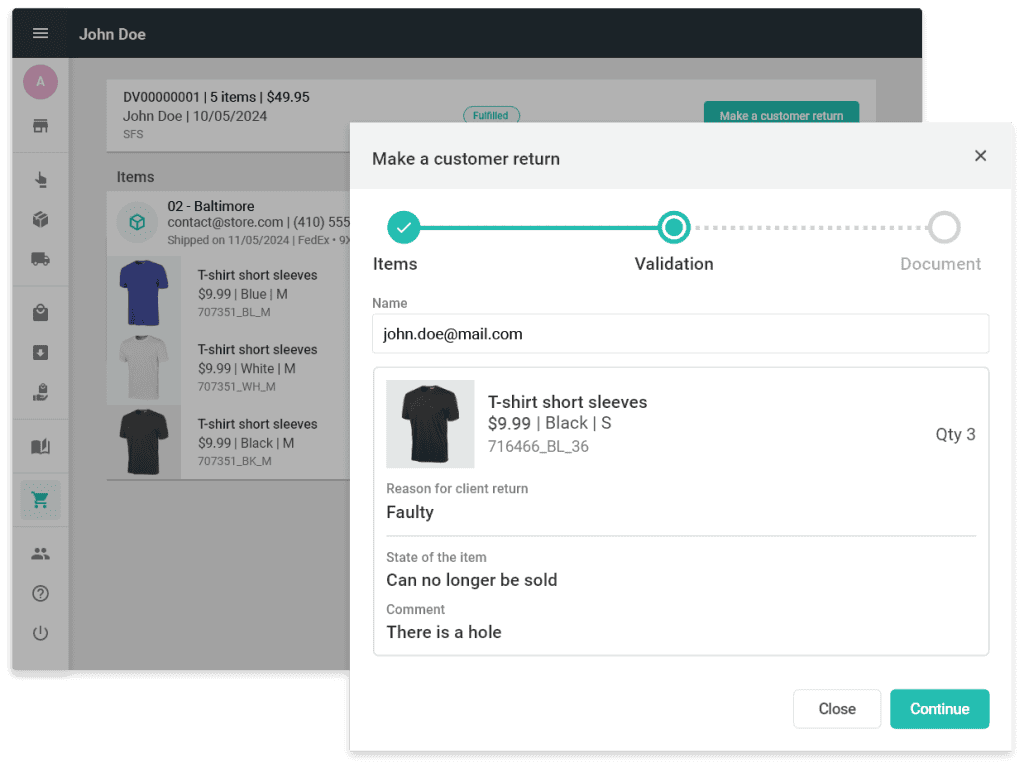
How does Returns Management work in an omnichannel environment?
By integrating Returns Management with your OMS, the returns process typically includes the following steps:
1
Return initiation
Customers request returns through various channels, such as online portals, customer service or in-store.
2
Return authorisation
The OMS automates the returns authorisation process based on pre-defined rules and policies, ensuring consistent and accurate returns approvals.
3
Return inspection
Upon receipt of the returned item, the retailer inspects it to ensure it meets the return conditions.
4
Return confirmation generation
The OMS generates a return confirmation via email or through the customer portal.
5
Refund processing
The OMS facilitates smooth refund processing, ensuring timely and accurate payments to customers.
6
Inventory updates and replenishment
The OMS updates inventory in real time as returns are processed, ensuring accurate stock levels and availability for future sale.
